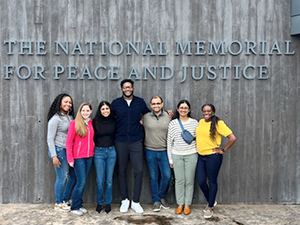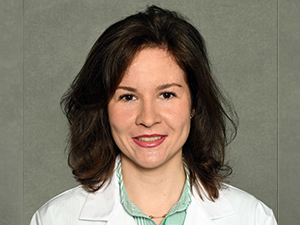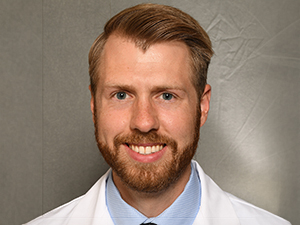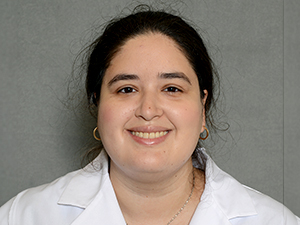
by Malcolm B. Chapman, M.D. (PGY-2)
During March and April 2024, UAB Internal Medicine Residents in the Health Disparities Track visited the Legacy Museum and the National Memorial for Peace and Justice at the Equal Justice Initiative in Montgomery, Alabama. Here is a reflection of one of those residents.
I walked silently, my gaze fixed on the rising pillars of oxidized metal. Despite being set on top of a verdant hill, this was an undeniably solemn place. As I descended the path further into the hill, row after row of the brown, rusting masses loomed overhead, bearing down on me as the concrete walls rose at my sides. Set into the surface of each pillar were dates and names of men, women, and children who were murdered by racial terror lynching.

As our time as chief medical residents draws to a close, we find ourselves reflecting on the past year—a year filled with growth, camaraderie, and unforgettable moments. It has been an honor to serve our residents and the program in this role. In our welcome address this fall, we reflected on new beginnings—a new leadership team, new office spaces, new interns, and a fresh start after the COVID years. This year, those new beginnings blossomed with strength and beauty. We are proud and joyful to have been a part of that growth. Notably, we were excited to revive several experiences that highlight our program’s rich culture, both in and out of the hospital.

by Jennie Hamilton, M.D., Ph.D. (PGY-1)
As we traveled to our first UAB House Calls visit, I thought of the iconic image of a physician carrying the classic black doctor bag, a frequent sight at the turn of the 20th century. Briefly, I mentally compared the work of two doctors separated by more than a century before my thoughts turned back to our first patient.
Ms. B was a 58-year-old woman with progressive chronic pain and metabolic disease. I had reviewed her electronic medical record (EMR) in preparation for the day. Her many routine office visits, symptoms, exams, diagnoses, and prescriptions had been carefully documented over the past decade.

by Griffin Selch, M.D. (PGY-2)
Medicine is about progress. As a profession and an industry, the field of medicine prioritizes continuous improvement. We as physicians dedicate an enormous amount of time and energy to learning, training, and eventually practicing medicine. Science is always marching forward, and with it, our understanding of—and ability to treat—disease changes. We are also deeply immersed in health systems; a hodgepodge of protocols, procedures, standards, and expectations—things that you do not learn about in medical school and then are thrust into with the start of residency, and even more so with the start of your first “real” medical job.

by Alejandra Osorio, M.D. (PGY-3)
As a newly minted PGY2, I started the academic year on an ambulatory rotation. Chart reviewing for my clinic patients later in the week, I stumbled across a patient handed off from a recently graduated PGY3. She had multiple no-shows to clinic without any explanation as to why. Well... I was going to find out why.
After a few rings, the patient picked up the phone. She explained that she lived in rural Alabama but was terrified of driving and couldn’t find a consistent ride, so getting to her appointments was difficult. She asked me if there were any resources I knew of that could help her get to her appointments.

I write each of you today with a heart filled with joy and pride. You, the graduates of our Tinsley Harrison Internal Medicine Residency Program, are absolutely fabulous physicians and colleagues. I have loved coming to know many of you and to learning so much from working with you.
In this issue of Letters to Tinsley, I draw your attention to a beautiful and heartfelt story, “The Fell Clutch,” by Malcolm Chapman, a current PGY-2. Malcolm implores us to visit the Legacy Museum and the National Memorial for Peace and Justice in Montgomery, where he recently journeyed with fellow residents in our program’s Health Disparities Track.